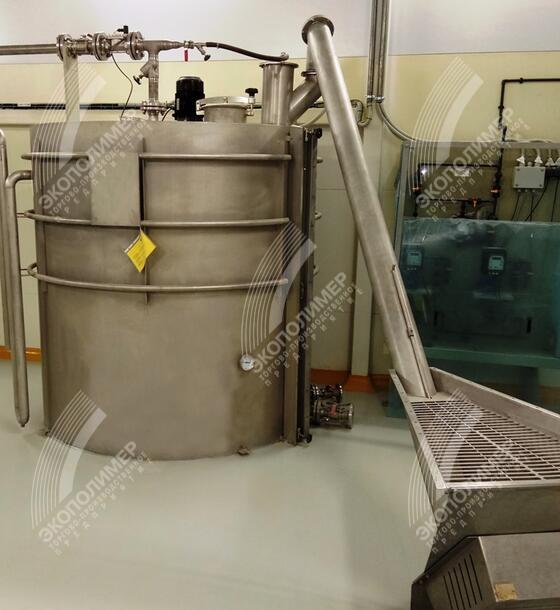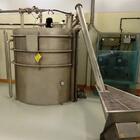Flocculant preparation station
The reagent preparation station is used for a complete automatic preparation of chemical solutions from granular, dry, and liquid substances.
The station dissolves and prepares a working solution of reagents that need a certain maturation/swelling time, such as a flocculant solution, and can also be used to prepare solutions that do not require maturation/swelling time, such as coagulants or solutions of salt compounds.
A compact station for the preparation of solutions from dry and liquid products consists of:
- a 1, 2 or 3-chamber container for dissolution, maturation and selection of reagent
- A water supply manifold, consisting of: shut-off valve, filter screen, solenoid valve, flowmeter, and control valve.
- Stirrers in the dissolution and maturation chamber.
- A mixer with wetting unit.
- A dry product dispenser with a capacitive minimum feed sensor for a dry product and a vibrator.
- A product selection and discharge manifold.
- A level sensor in the selection chamber.
- A control cabinet.
Operating principle of the 3-chamber station. The station operates in full automatic mode with constant or cyclic preparation of the solution according to the flow principle. The flow principle of operation is characterized by that the solution is prepared in a 3-chamber container. Wetting, dissolving, maturing and dosing takes place as one continuous process.
Water is fed into the first chamber and to the wetting unit of the mixer along the supply manifold. The dispenser feeds the dry product to the wetting unit of the mixer. A mixture of the dry product with water from the mixer is fed into the first chamber. In the first chamber, stirring is carried out with a stirrer. The diluted reagent solution is poured from the first chamber through the partition wall into a second maturation chamber, where it is also stirred with a stirrer. From the second chamber, the already matured solution is poured into the third, selection chamber. When the solution flows from one chamber to another, a slight mixing of the reagents is possible in their contact zone. Thus, it is possible that an immature solution (for example, a flocculant) enters the third chamber from the first chamber. This amount of immature solution is insignificant, but it should be noted when using a solution for processes such as reverse osmosis.
A station for the preparation of reagents from dry and granular products can be designed with a feed unit.
Principal preparation scheme:
- a big bag discharger with the receiving hopper, for feed product;
- screw / belt feeder for feeding the dry product from the receiving hopper to the dissolving container;
- dissolving container.



